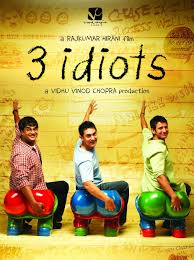What’s holding back the Indian film industry
Have you seen the movie Harishchandrachi Factory? For it, Paresh Mokashi received the Best Director award at Pune International Film Festival. It was also India’s official entry to Academy Award in the Best Foreign Language Film Category in 2009. There’s just one problem: the film was in Marathi. This means unless you understood the language or were ready to make do with the subtitles, you would have opted to give the film a miss.
The same goes for a film in any Indian language. Yes, India is a land of diversity and the separation of people geographically did lead to the creation of different languages for different states. Most Indians are bi-lingual or multilingual. But, to break it down, they generally understand their mother-tongue, English and the language of the state they grew up in.
Unlike Hollywood , the indian film industry does not enjoy the priveledge of being accessable to an entire country. Often times, Bollywood has wrongly been attributed a status equivalent to that of Hollywood, but this is not true. However, Bollywood has a grip on India like no other film industry simply because most people in India understand Hindi. No, don’t listen to the propagandist Hindi teacher who told you Hindi is the national language and to be truly Indian, you should get good grades in her subject—she was wrong. However, it is true that most people living in the north are familiar with Hindi and speak it on a daily basis and for some, it is the language of their state. Therefore, where the north is concerned, Bollywood has many takers.
When we travel to the South, however, the story is different. Though a migrant population and the teaching of Hindi as a second language in most schools ensures the makers of Bollywood films that they will always have an audience wherever they go, we all know the pickings will be slimmer.
Paradoxically, this is the reason Tamil, Telegu and Malayalam movies still hold their own in a country dominated by Bollywood. This is why we are more familiar with the labels like Tollywood, Kollywood and Mollywood rather than say Jollywood or Dollywood used for the Assamese and Gujrati film industry respectively.
Having a country full of film buffs and a rich language pool with 18 scheduled languages, this diversity could be seen as a problem as well as an advantage for film makers. While you may lack access to a blockbuster film just because you may not know the language it is made in, this very fact creates a market for filmmakers in your own language. This is probably why India is; and will continue to be the world’s largest producer of films in the world.

